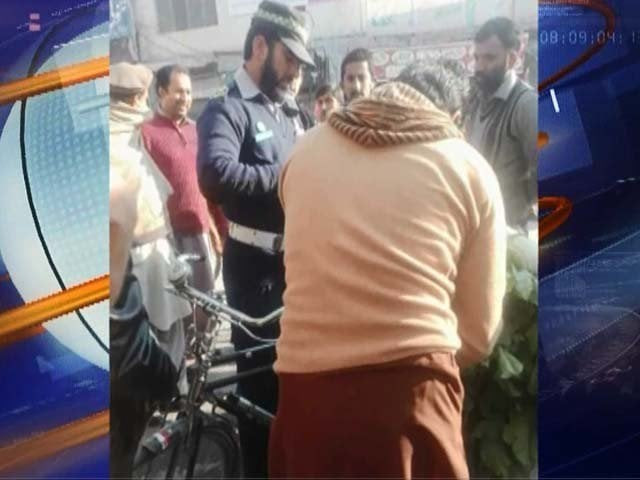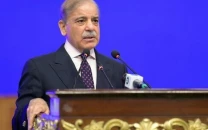Modernising policing: City gets ‘hassle-free’ digital challan system
New initiative will help track record of violator from a database

PHOTO: EXPRESS/SCREENGRAB
The digitisation was launched by Capital City Police Officer (CCPO) Amin Wains and Punjab Information and Technology Board (PITB) Chairperson Umar Saif at a ceremony held in Alhamra Hall. Chief Traffic Police Officer (CTO) Rai Ijaz Ahmad, SSP Traffic Athar Waheed, wardens and other officers of the traffic police were present on the occasion.
FIR oversight: Peshawar gets online case management, monitoring system
Under this modern challan system, a control room has been established at Qurban Lines. All the 34 traffic sectors and the chief traffic police officer’s office have been provided computers, printers and biometric machines. CTO Rai Ijaz Ahmad said 95 computers, 42 biometric machines and 59 printers have been provided to these offices for the digitisation of the challans. “As many as 252 CCTV cameras have also been installed for surveillance and monitoring while the process of installing UPS systems was underway,” he added. At the same time, he believed biometric machines at offices would contribute to better human resource management.
All the computers, CCTV cameras and biometric machines were integrated with the control room established at Qurban Lines. The control system also has social media monitoring and a campaign system for CTPL. It had also a system of media monitoring. “With the help of this system, traffic police say it be easy to monitor whatever is going on in their sectors,” CTO added. “It will help in promoting efficiency, transparency and proficiency.
First batch of traffic assistants graduates
The ticketing officers and wardens will update the data of all the challans as soon as possible and not later than an eight-hour shift.”
Ijaz said CTPL were using a manual system of issuing challans. “Besides other shortcomings of the system, we have no database of challans under the manual system. History of any violator is not available. It is literally impossible to compile the history of a violator,” he added.
The officer said after the challans were updated on the database, tracing the history of an individual would be just a click away. One just has to enter a name, CNIC or some other identity of the violator, he added.
He said the traffic police had no data about the nature of violations at different points of the city.
Ijaz pointed out that at least 1.6 million challans, issued by CTPL, were pending with the courts. “All these challans were issued by seizing either the CNIC, licence or registration book of the violator. Despite this, the challans were pending as violators would prefer to get a duplicate document issued as the procedure was simpler compared to the hassle he or she had to face in getting back his documents through the proper channel of the challan,” he explained. Once the digitisation was done, traffic police would build coordination with National Accountability and Data Registration Authority (NADRA) not to issue CNIC until CTPL challan was paid.
CTO also claimed that the system would prove useful in determining key-performing indicators (KPI) of the wardens. “After the digitisation of all the challans, traffic police will move to an e-challaning system,” he said. While speaking on the occasion, PITB Chairperson Umar Saif said they had been working with all the departments of Punjab. He said during all their work for digitisation, they loved working with Punjab Police.
Published in The Express Tribune, April 14th, 2018.



















COMMENTS
Comments are moderated and generally will be posted if they are on-topic and not abusive.
For more information, please see our Comments FAQ